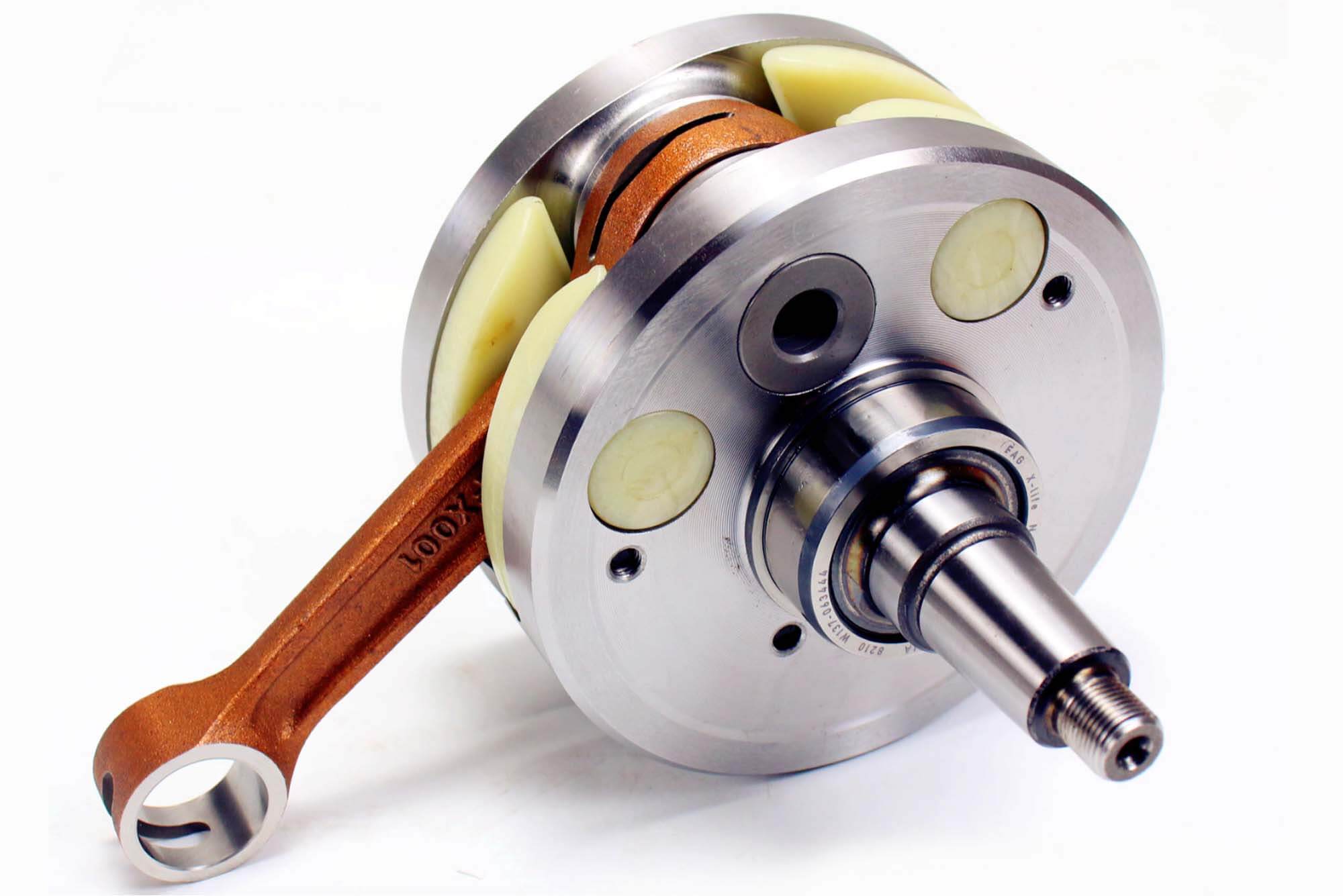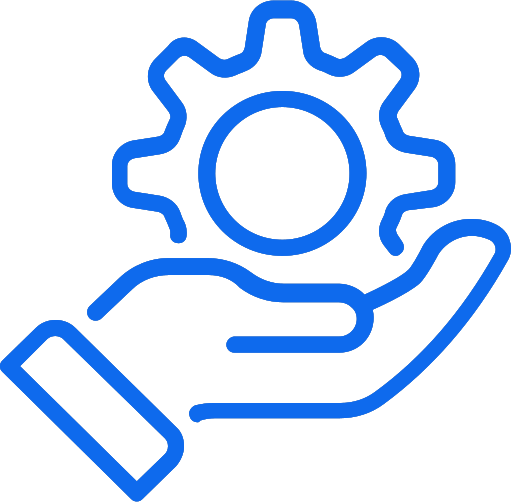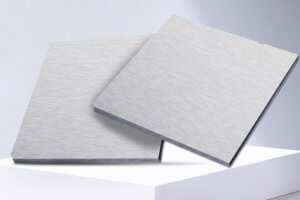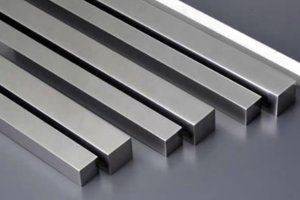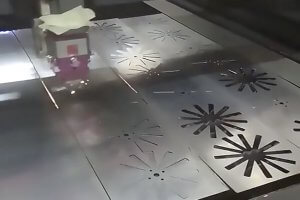I. Introduction
Crankshaft bearing is among the most critical component within engines and mechanical systems. They directly affect performance, durability, and efficiency by supporting the rotation of the crankshaft and reducing friction between moving parts. Even minor imperfections in crankshaft bearings can lead to severe engine damage or decreased lifespan.
Throughout my years in precision machining, I’ve consistently observed how CNC technology has reshaped crankshaft bearing production. It delivers accuracy, repeatability, and superior surface quality that traditional machining methods can’t match. Whether in automotive engines, aircraft turbines, marine propulsion, or industrial machinery, CNC-machined crankshaft bearings play a crucial role in ensuring reliability and high performance.
However, manufacturing these bearings isn’t without its challenges. High precision requirements, demanding materials, and strict quality control standards mean manufacturers must adopt meticulous machining practices. In this guide, I’ll provide comprehensive insights into crankshaft bearing machining, including technical foundations, industry applications, CNC equipment selection, process optimization techniques, market trends, and practical recommendations from personal experience.
II. Technical Principles and Advantages
What is a Crankshaft Bearing?
A crankshaft bearing is designed to support the rotating crankshaft, reducing friction and ensuring smooth operation. There are two primary types:
- Main Bearings: Support the main journals of the crankshaft, maintaining stability and alignment.
- Connecting Rod Bearings: Located between connecting rods and crankpins, allowing smooth reciprocating movement.
Bearing materials typically include specialized alloys and composites chosen based on strength, heat tolerance, and friction reduction. Each material offers unique benefits tailored to specific applications.
Detailed Material Comparison Table:
| Material | Key Advantages | Typical Applications | Challenges |
|---|---|---|---|
| Steel Alloy | Strength, durability, fatigue resistance | Automotive, industrial machinery | Hard to machine, requires tooling precision |
| Aluminum Alloy | Lightweight, heat dissipation | Automotive racing, aerospace engines | Limited load-bearing capacity |
| Bronze Alloy | High wear resistance, low friction | Marine engines, heavy industrial | Higher cost, specific machining needs |
| Composite | Corrosion resistance, lightweight | Aerospace, racing | Difficult to machine precisely |
| Ceramic | High-temperature resistance, ultra-low friction | Aerospace turbines, high-performance engines | Brittle, specialized machining required |
| Stainless Steel | Corrosion resistance, strength | Marine, harsh environments | Tool wear, higher machining costs |
In my experience, steel and bronze alloys are most commonly chosen for automotive and industrial applications due to their excellent load-bearing capacity and durability.
CNC Machining of Crankshaft Bearings
CNC machining has become the gold standard for manufacturing crankshaft bearings due to its ability to deliver consistent precision and repeatability. Key CNC processes involved are turning, milling, grinding, and electrical discharge machining (EDM).
- CNC Turning: Ideal for achieving precise internal and external diameters and ensuring concentricity.
- CNC Milling: Used for adding complex features, grooves, and oil channels critical for lubrication.
- CNC Grinding: Essential for ultra-high precision finishing, producing extremely smooth surfaces necessary to minimize friction.
- EDM Machining: Particularly effective for intricate details and very hard materials not easily cut by conventional means.
From personal experience, CNC grinding stands out for its unmatched ability to consistently achieve exacting dimensional tolerances required for bearings used in high-performance engines.
Advantages of CNC Machining for Crankshaft Bearings
The adoption of CNC machining provides substantial advantages in bearing production:
- High Precision and Repeatability: CNC machines deliver parts consistently within micrometer tolerances.
- Flexibility in Material Selection: Capable of processing diverse, difficult-to-machine materials.
- Improved Surface Quality: Superior surface finishes reduce friction, prolonging bearing life.
- Cost Efficiency in Volume Production: CNC setups are repeatable and scalable for large manufacturing runs.
Common Challenges and Solutions in CNC Machining
In practice, several challenges often arise:
- Tool Wear: Hardened materials rapidly degrade cutting tools. Regular monitoring and high-quality tooling such as CBN inserts effectively mitigate this.
- Thermal Expansion: Heat generated during machining can distort bearing dimensions. Proper coolant management and thermal controls help maintain accuracy.
- Maintaining Precision: Variations in machine setup and alignment cause inconsistencies. Using robust fixtures and frequent calibration has consistently improved results in my projects.
III. Application Scenarios
CNC machined crankshaft bearings are extensively used across diverse industries due to their reliability and precision.
Automotive Industry
Crankshaft bearings in automotive engines must withstand continuous high loads, vibrations, and thermal cycles. CNC machining ensures durability and accuracy, improving engine efficiency and lifespan. I’ve observed major automotive manufacturers increasingly relying on CNC machined steel bearings due to their reliability under extreme conditions.
Aerospace Industry
Precision and reliability in aerospace bearings are non-negotiable due to safety regulations. CNC machining offers the required exact tolerances, superior surface finishes, and lightweight composite materials critical in aircraft engine bearings. My involvement with aerospace components reinforced the value of CNC’s unmatched precision.
Heavy Machinery Manufacturing
Heavy equipment bearings must handle enormous stresses and loads. CNC machining precisely produces robust bearings from materials like hardened steel and bronze alloys, essential for industrial machines. This precision directly enhances equipment reliability and reduces downtime.
Marine Manufacturing
Marine crankshaft bearings need exceptional resistance to corrosion and wear. CNC machining from bronze alloys or stainless steel ensures bearings perform reliably in harsh marine environments. Precision machining also reduces maintenance frequency—a significant advantage I’ve noted in marine engine projects.
Power Generation Equipment
Generators and turbines rely heavily on precision crankshaft bearings. CNC machined ceramic composite bearings, capable of enduring high temperatures and continuous operation, are increasingly chosen for their reliability and long operational life.
Industry Application Table:
| Industry | CNC Machining Benefits | Typical Materials | Example Applications |
|---|---|---|---|
| Automotive | High accuracy, mass production | Steel alloys, aluminum | Passenger cars, racing vehicles |
| Aerospace | Ultra-high precision, lightweight | Composites, ceramic, aluminum alloys | Turbine engines, aircraft gearboxes |
| Heavy Machinery | Strength, durability | Steel alloys, bronze | Excavators, compressors |
| Marine | Corrosion resistance, wear reduction | Stainless steel, bronze alloys | Ship engines, propeller shafts |
| Power Generation | Reliability, high-temp performance | Ceramic composites, hardened steel | Gas turbines, diesel generators |
| Motorsport Racing | Ultra precision, minimal friction | Ceramic composites, aluminum alloys | Formula racing engines |
IV. Equipment Selection and Process Optimization
Choosing the right CNC equipment and optimizing processes is crucial to successful crankshaft bearing manufacturing. Over time, I’ve learned that each step—from selecting machines to adjusting cutting parameters—affects the final bearing quality.
Selecting CNC Machines for Crankshaft Bearing Production
Different CNC machines excel in different aspects of bearing production. Based on my own experience, here’s how I recommend selecting machines:
| CNC Machine Type | Applications & Advantages | Typical Materials |
|---|---|---|
| CNC Lathe | Turning inner/outer diameters, achieving concentricity | Steel, bronze, aluminum alloys |
| CNC Milling | Machining grooves, channels, complex profiles | Aluminum, composites, alloys |
| CNC Grinder | Finishing surfaces to ultra-high precision | Hardened steels, ceramic composites |
| CNC EDM | Intricate details in hardened alloys | Carbide, titanium alloys, tool steels |
Personally, I rely heavily on CNC grinders and lathes for bearing applications requiring extremely tight tolerances and smooth surfaces.
Tool Selection for Optimal Results
Choosing the right tooling material can significantly improve productivity and bearing quality. Here’s a quick reference based on what I’ve found most effective:
| Tool Material | Ideal for Machining | Benefits | Limitations |
|---|---|---|---|
| Carbide | General metals, composites | Versatility, good lifespan | Limited in hardened steels |
| CBN | Hardened steel, iron alloys | Long tool life, superior finish | Higher cost |
| PCD | Aluminum, composites | Extreme durability, precision | Not suitable for ferrous metals |
| Diamond Coated | Ceramics, abrasive materials | Exceptional surface finish | High cost, brittle |
CNC Programming Considerations
Programming CNC machines properly can transform productivity. Here are programming strategies I often use:
- Adaptive Machining: Automatically adjusting feed rates and speeds to optimize tool performance.
- Multi-pass Finishing: Multiple finishing passes for tighter tolerances and smoother surfaces.
- Optimized Coolant Management: Targeted cooling strategies reduce thermal distortion and improve precision.
Process Optimization Techniques
Effective process optimization reduces manufacturing time, enhances precision, and saves costs. Techniques I recommend include:
- High-Speed Machining (HSM): Using higher speeds and lighter cuts, reducing machining time while maintaining precision.
- Automated Tool Monitoring: Real-time tool wear detection, preventing tool failures and minimizing downtime.
- Thermal Control Measures: Carefully managed coolant application prevents distortion during precision grinding.
Inspection and Quality Control
Precision inspection tools help guarantee quality. I’ve successfully used these methods frequently:
| Inspection Tool | Application | Advantages |
|---|---|---|
| Coordinate Measuring Machine (CMM) | Precision dimensional checks | Highest accuracy for complex geometries |
| Optical Comparator | Rapid profile verification | Quick, efficient inspection |
| Surface Profilometer | Surface roughness measurements | Precise surface finish control |
| Digital Micrometers | Diameter and thickness verification | Fast, accurate, easy to use |
V. Market Trends and Industry Analysis
Understanding market trends helps manufacturers stay ahead in crankshaft bearing production. Through my observations, several clear trends have emerged:
- Increasing Demand for Precision: High-performance applications in automotive and aerospace drive greater precision requirements.
- Advances in CNC Technology: AI-driven optimization, multi-axis machining, and real-time monitoring are improving machining efficiency.
- Sustainability Initiatives: Growing preference for eco-friendly materials and processes, reducing environmental impacts.
- Integration of Automation (Industry 4.0): IoT and automated CNC systems ensure consistent quality and improved productivity.
Competitive Landscape Analysis
| Competitor Type | Strengths | Weaknesses |
|---|---|---|
| Large Manufacturers | Mass production, cost-efficient | Less flexible, slower innovation |
| Specialized Producers | High precision, custom solutions | Limited scalability |
| Innovative Startups | Cutting-edge innovation, agile adaptation | Limited market presence |
To stay competitive, investing in precision and innovation has consistently proven beneficial.
VI. Summary and Outlook
Crankshaft bearing machining relies heavily on CNC technology for precision, quality, and productivity. High precision requirements, diverse material needs, and rigorous application environments make CNC machining essential.
From my perspective, manufacturers who continuously optimize CNC processes, adopt advanced technologies, and embrace sustainability are likely to dominate the market. Future innovations, especially in smart machining and sustainable practices, promise further advancement in crankshaft bearing production.
FAQ
Here are clear answers to common questions about CNC machining crankshaft bearings:
1. What is a crankshaft bearing?
It’s a bearing supporting the crankshaft, reducing friction and ensuring smooth rotation in engines and machinery.
2. Why use CNC machining for crankshaft bearings?
CNC machining provides the precision, consistency, and surface finish required for high-performance bearings.
3. Which industries use CNC machined crankshaft bearings?
Automotive, aerospace, heavy machinery, marine, power generation, motorsport racing.
4. What materials are common in crankshaft bearings?
Steel alloys, aluminum alloys, bronze alloys, composites, ceramics, stainless steel.
5. How can machining precision be improved?
Using CNC grinders, precise fixtures, adaptive machining techniques, and optimized toolpaths.
6. What CNC equipment is best for crankshaft bearings?
CNC lathes and grinders are most critical, with EDM and milling useful for specialized features.
7. How do you select tools for crankshaft bearing machining?
Match tools to materials—CBN for hardened steel, carbide for general machining, diamond-coated for ceramics.
8. What are common challenges in CNC bearing machining?
Tool wear, thermal distortion, dimensional consistency, surface finish issues.
9. How do you optimize surface finishes?
Employ CNC grinding, fine finishing passes, specialized coolants, and quality inspection.
10. What inspection methods are recommended?
CMM, profilometers, optical comparators, digital micrometers.
11. What role does lubrication play in CNC machining?
Critical for reducing heat, preventing distortion, and improving tool life.
12. How important is sustainability in bearing manufacturing?
Increasingly important; customers favor eco-friendly materials and energy-efficient processes.
13. Can CNC milling effectively produce bearings?
Yes, especially for bearings with complex geometries or special grooves.
14. What market trends affect crankshaft bearing production?
Precision demand, advanced CNC technologies, Industry 4.0, sustainability initiatives.
15. How does CNC machining improve overall productivity?
Reduces setup time, enhances consistency, automates processes, reduces downtime.
Authoritative Resources
For readers seeking authoritative resources to further explore the topics discussed in this article, the following references provide valuable information:
- Crankshaft Overview:
An in-depth explanation of crankshafts, their functions, and designs.
https://en.wikipedia.org/wiki/Crankshaft - Main Bearing Fundamentals:
Detailed information on main bearings, including their role in supporting the crankshaft within an engine.
https://en.wikipedia.org/wiki/Main_bearing - Connecting Rod Mechanics:
Insights into the function and design of connecting rods in piston engines.
https://en.wikipedia.org/wiki/Connecting_rod - Complete Machining of Crankshafts in Small Series:
An article discussing efficient methods for machining crankshafts, emphasizing the use of multifunctional machining centers.
https://www.geartechnology.com/articles/30436-complete-machining-of-crankshafts-in-small-series - Crankshaft Design, Materials, Loads, and Manufacturing:
A comprehensive overview of crankshaft design considerations, material selection, and manufacturing processes.
https://www.epi-eng.com/piston_engine_technology/crankshaft_design_issues.htm - Crankshaft Machining Process:
An overview of the steps involved in machining crankshafts, highlighting modern techniques and equipment.
https://grish.com/crankshaft-machining-process-2/ - Engine Bearing Fundamentals:
A detailed look into the function and types of engine bearings, focusing on their role in supporting the crankshaft.
https://www.tribonet.org/wiki/engine-bearing/ - Crankshaft Mould CNC Machining Based on CAD/CAM Technique:
A research paper discussing the application of CAD/CAM techniques in CNC machining of crankshaft molds.
https://www.researchgate.net/publication/303399042_Crankshaft_mould_CNC_machining_based_on_CADCAM_technique
These resources offer comprehensive insights into crankshaft bearings, CNC machining processes, and related engineering principles.
Other Articles You Might Enjoy
- Complete Guide to Sleeve Bearing Machining: Techniques, Applications, and CNC Optimization
I. Introduction If you've worked around machinery or mechanical components, you've probably encountered a sleeve bearing at some point. Sleeve bearings, also known as plain bearings or bushings, are simple components designed…
- How to Achieve High-Precision Bearing Race Production with CNC Machining
I. INTRODUCTION I remember the first time I got involved with bearing race production. Back then, I struggled to understand why these simple-looking rings needed such tight tolerances. Yet the…
- Understanding Wheel Hub Bearing And How CNC Machining Ensures Precision
Chapter 1: Why Understanding Wheel Hub Bearings and CNC Machining Matters A wheel hub bearing is a critical component in virtually every vehicle on the road.When I first learned about…
- Main Bearing Performance Boost: How to Achieve It with CNC Machining
Chapter 1:Introduction I remember the first time I heard someone ask, “Isn’t a main bearing just a regular bearing?”My immediate thought was that a main bearing is more specialized than…
- Flange Bearing Manufacturing & Buying Guide: CNC Machining vs. Ready-to-Use Bearings
Introduction: What Are Flange Bearings and Why Are They Important? I can still remember the first time I came across the term “flange bearing.”It was early in my career, back when…
- About Pilot Bearing: Design Customizing Tips, CNC Machining Insights, and Sourcing Guide
Introduction A pilot bearing may seem like a small component, but it plays a critical role in the smooth operation of clutch systems, transmission assemblies, and industrial equipment. Its purpose…
- Linear Bearing Guide: Types, Applications, and Selection Tips for CNC Systems
Introduction If you’ve worked with CNC machines, you know how critical precision and smooth motion are to achieving consistent results. At the heart of this precision lies an often-overlooked component:…
- Journal Bearing Machining: Mastering Techniques for Precision and Performance
I. Introduction Journal bearing, a staple in many industries, serve as a critical component for supporting rotating machinery. Whether you’re working with high-speed turbines in energy plants or automotive crankshafts,…
- Exploring Rod Bearing: Customization, Machining, and Supply Chain Dynamics
Introduction: What is a Rod Bearing? When I first learned about rod bearing, I was surprised by how such a seemingly small and simple component plays a pivotal role in…
- Machining Techniques for Parts: Unlocking CNC and Cutting-Edge Tech
I. Introduction I remember the first time I realized how critical machining is to modern manufacturing. I was interning at a small shop, watching a CNC machine carve intricate features…


